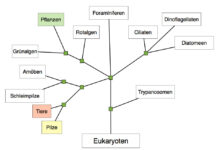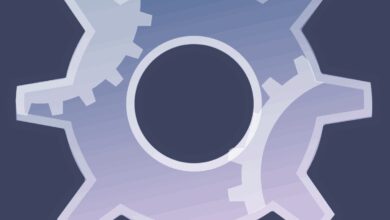System Design Interview: 7 Ultimate Secrets to Crush Your Next Tech Interview
Landing your dream tech job? Mastering the system design interview is your golden ticket. It’s not just about coding—it’s about thinking big, scaling smart, and impressing top-tier engineering teams.
What Is a System Design Interview?

A system design interview is a critical component of the hiring process for software engineering, backend development, and architecture roles at top tech companies like Google, Amazon, Meta, and Netflix. Unlike coding interviews that focus on algorithms and data structures, system design interviews assess your ability to design scalable, reliable, and maintainable systems from scratch.
Core Objectives of a System Design Interview
The primary goal is to evaluate how well a candidate can break down a complex real-world problem into manageable components, make intelligent trade-offs, and communicate their thought process clearly. Interviewers aren’t looking for a single correct answer—they want to see structured thinking, depth of knowledge, and adaptability.
- Assess problem-solving and architectural skills
- Evaluate communication and collaboration abilities
- Test understanding of scalability, reliability, and performance
Common Roles That Require System Design Interviews
These interviews are especially common for mid-to-senior level positions where system-level thinking is crucial. Roles include:
- Software Engineer (especially backend or full-stack)
- Systems Architect
- DevOps Engineer
- Engineering Manager
- Site Reliability Engineer (SRE)
“The best engineers don’t just write code—they design systems that last.” — Anonymous Senior Engineer, Google
Why System Design Interview Skills Are Non-Negotiable
In today’s cloud-native, microservices-driven world, the ability to design robust systems is no longer optional—it’s essential. Companies need engineers who can anticipate bottlenecks, plan for growth, and build resilient architectures.
High Stakes in Top Tech Companies
At FAANG companies (Facebook/Meta, Amazon, Apple, Netflix, Google), the system design interview often carries as much weight as the coding rounds. A strong performance here can tip the scales in your favor, even if you struggled slightly in other areas.
For example, Amazon emphasizes its Well-Architected Framework, which focuses on operational excellence, security, reliability, performance efficiency, and cost optimization—all topics that frequently come up in a system design interview.
Real-World Impact of Poor System Design
History is littered with examples of companies that failed due to poor scalability decisions. Remember when Twitter used to crash every time a celebrity tweeted? That was the “Fail Whale” era—a direct result of inadequate system design under load.
Today, platforms like TikTok and Instagram handle millions of concurrent users because they were built with scalability in mind from day one. Your system design interview performance shows whether you can avoid those pitfalls.
Step-by-Step Framework for Tackling Any System Design Interview
Success in a system design interview isn’t about memorizing answers—it’s about having a repeatable, logical framework. Here’s a proven 6-step approach used by successful candidates.
Step 1: Clarify Requirements (Functional & Non-Functional)
Never jump into design without first understanding the problem. Ask clarifying questions like:
- What are the core features? (e.g., post tweets, follow users, view timelines)
- How many users? What’s the expected QPS (queries per second)?
- What are latency and availability requirements?
- Is data consistency more important than availability?
For example, in a Twitter-like system design interview, you’d need to know if the timeline is real-time or precomputed, whether retweets are supported, and how images/videos are handled.
Step 2: Estimate Scale (Back-of-the-Envelope Math)
Estimation is a key skill. Use simple math to project storage, bandwidth, and server needs.
Example: If 100 million users post 1 tweet/day, and each tweet is ~200 bytes:
- Daily tweets: 100M × 1 = 100M
- Daily storage: 100M × 200 bytes = ~20 GB/day
- Yearly: ~7.3 TB
- QPS for writes: 100M / 86400 ≈ 1,157 writes/sec
- QPS for reads (assuming 10:1 read/write ratio): ~11,570 reads/sec
This helps you decide whether to use a single database or a sharded setup.
Step 3: Define System APIs (Interface Design)
Sketch out the key endpoints your system will expose. This shows you’re thinking like a developer.
Example for a URL shortener:
POST /shorten {"long_url": "..."} → {"short_code": "abc123"}GET /{short_code} → 301 Redirect to long URL
This step aligns your design with real API contracts.
Key Components to Consider in a System Design Interview
A well-rounded answer touches on multiple architectural layers. Let’s break down the essential components you should address.
Data Model and Database Design
Choose the right database based on access patterns. For high write throughput, consider NoSQL (e.g., Cassandra, DynamoDB). For complex queries, SQL (e.g., PostgreSQL) may be better.
In a system design interview for a social network, you might model:
- User table: id, name, email, created_at
- Follow table: follower_id, followee_id
- Tweet table: id, user_id, content, timestamp
Consider indexing on user_id for fast lookups and timestamp for chronological feeds.
High-Level Architecture (Diagramming)
Draw a block diagram showing:
- Client (web/mobile)
- Load balancer
- Application servers
- Database(s)
- Cache (Redis/Memcached)
- Message queues (Kafka/RabbitMQ)
- CDN for static assets
Use tools like draw.io to practice. In interviews, sketch it on a whiteboard or virtual canvas.
“A picture is worth a thousand lines of code.” — Common Engineering Adage
Scalability Patterns Every Candidate Must Know
Scalability is the heart of any system design interview. You must demonstrate knowledge of horizontal vs. vertical scaling and common patterns.
Load Balancing and Horizontal Scaling
Instead of upgrading a single server (vertical scaling), add more servers (horizontal scaling). Use a load balancer (e.g., NGINX, AWS ELB) to distribute traffic.
Benefits:
- Improved fault tolerance
- Better resource utilization
- Easier to scale incrementally
Challenges:
- Session management (use sticky sessions or external session stores)
- Consistent hashing for even distribution
Database Sharding
When a single database can’t handle the load, shard it. Sharding splits data across multiple databases based on a key (e.g., user_id).
Types:
- Range-based: Users 1–1M on DB1, 1M–2M on DB2
- Hash-based: hash(user_id) % N → shard number
- Directory-based: lookup table maps keys to shards
Trade-offs: Sharding improves performance but complicates joins and transactions.
Handling Reliability and Fault Tolerance
A great system doesn’t just scale—it survives failures. Interviewers want to hear about redundancy, retries, and monitoring.
Replication and High Availability
Use master-slave or multi-master replication to ensure data is not lost if a node fails.
Example: In a system design interview for a banking app, you’d want synchronous replication to ensure consistency, even at the cost of latency.
For read-heavy apps (e.g., news sites), asynchronous replication to read replicas can offload queries.
Circuit Breakers and Retry Mechanisms
When services call each other, failures can cascade. Use patterns like:
- Circuit breaker (e.g., Hystrix): Stops calls to a failing service temporarily
- Retry with exponential backoff: Prevents overwhelming a recovering service
- Timeouts: Prevent hanging requests
These are especially important in microservices architectures.
Performance Optimization Techniques
Speed matters. Show you know how to make systems fast and responsive.
Caching Strategies
Caching is the easiest win for performance. Use:
- Client-side caching (browser cache)
- CDN for static assets (images, JS, CSS)
- Server-side cache (Redis) for frequent database queries
Cache invalidation is hard—use TTL (time-to-live) or write-through policies.
Example: In a system design interview for a movie streaming service, cache popular movie metadata in Redis to reduce database load.
Asynchronous Processing with Message Queues
Offload slow tasks (e.g., sending emails, video encoding) to background workers using queues.
Tools:
- Kafka: High-throughput, durable
- RabbitMQ: Flexible routing
- Amazon SQS: Managed service
This improves response time and system resilience.
Common System Design Interview Questions and How to Approach Them
Practice with real-world scenarios. Here are 5 classic questions and strategies to tackle them.
Design a URL Shortener (e.g., TinyURL)
Key considerations:
- Short code generation (base62 encoding)
- High read-to-write ratio (cache aggressively)
- Redirect latency (use CDN or edge caching)
- Expiration and cleanup (TTL-based)
Architecture: API gateway → application server → database + Redis cache → CDN for redirects.
Design a Chat Application (e.g., WhatsApp)
Challenges:
- Real-time messaging (WebSockets or MQTT)
- Message delivery guarantees (at-least-once vs. exactly-once)
- End-to-end encryption
- Offline message storage
Use a message broker like Kafka for durability and WebSocket servers behind a load balancer.
Design a Rate Limiter
Prevent abuse by limiting requests per user/IP.
Algorithms:
- Token bucket
- Leaky bucket
- Fixed window counter
- Sliding window log
Implement using Redis for shared state across servers.
How to Prepare for a System Design Interview: A 30-Day Plan
Preparation is everything. Here’s a structured plan to go from beginner to confident candidate.
Week 1-2: Build Foundational Knowledge
Focus on core concepts:
- Read Donne Martin’s System Design Primer (free, comprehensive)
- Study CAP theorem, ACID vs. BASE, consistency models
- Learn about load balancing, caching, CDNs, databases
Watch videos from HiredInTech, Gaurav Sen, and System Design Interview on YouTube.
Week 3: Practice Design Problems
Pick 1-2 problems per day. Use the 6-step framework:
- Clarify requirements
- Estimate scale
- Define APIs
- Sketch high-level design
- Dive into data model
- Discuss trade-offs
Practice out loud—explain as if teaching someone.
Week 4: Mock Interviews and Feedback
Simulate real conditions:
- Use platforms like Pramp, Interviewing.io, or Exponent
- Record yourself and review
- Get feedback from peers or mentors
Focus on communication: speak clearly, draw neatly, ask questions.
Advanced Tips to Stand Out in a System Design Interview
Everyone studies the basics. To truly shine, go deeper.
Discuss Trade-Offs Explicitly
Every decision has pros and cons. For example:
- SQL vs. NoSQL: consistency vs. scalability
- Monolith vs. microservices: simplicity vs. flexibility
- Strong vs. eventual consistency: accuracy vs. availability
Say: “I’d choose Redis for caching because of its low latency, but I accept the risk of data loss on restart unless persistence is enabled.”
Think About Operational Concerns
Mention monitoring (Prometheus, Grafana), logging (ELK stack), and alerting. Talk about CI/CD pipelines and canary deployments.
Example: “We’ll deploy new versions gradually using canary releases and monitor error rates before full rollout.”
Anticipate Follow-Up Questions
Interviewers often ask:
- How would you handle 10x more traffic?
- What if the database goes down?
- How do you secure the system?
- How would you migrate from v1 to v2?
Prepare answers in advance.
What is the most common mistake in a system design interview?
Jumping into design too quickly without clarifying requirements. Candidates often assume too much and end up solving the wrong problem. Always start by asking questions about scale, features, and constraints.
How long should I spend on each part of the interview?
Aim for: 5 minutes on requirements, 10 on estimation, 15 on API and high-level design, 15 on deep dives, and 5 on trade-offs and follow-ups. Stay flexible based on interviewer cues.
Do I need to know specific tools like Kubernetes or Docker?
Not deeply, but mentioning containerization (Docker) and orchestration (Kubernetes) shows awareness of modern deployment practices. Focus more on concepts than tooling.
Can I use diagrams in a virtual system design interview?
Absolutely. Use tools like Excalidraw, Miro, or Google Jamboard. Share your screen and draw as you explain. Clear visuals make your thinking easier to follow.
How important is coding in a system design interview?
Not very. You might write pseudocode for a key function (e.g., generating a short code), but the focus is on architecture, not syntax. Save coding for the algorithm rounds.
Mastering the system design interview is a journey, not a sprint. It requires understanding distributed systems, practicing real problems, and refining your communication. By following the step-by-step framework, studying common patterns, and preparing strategically, you can walk into any interview with confidence. Remember, it’s not about knowing everything—it’s about thinking clearly, adapting to feedback, and showing you can build systems that scale.
Recommended for you 👇
Further Reading:









